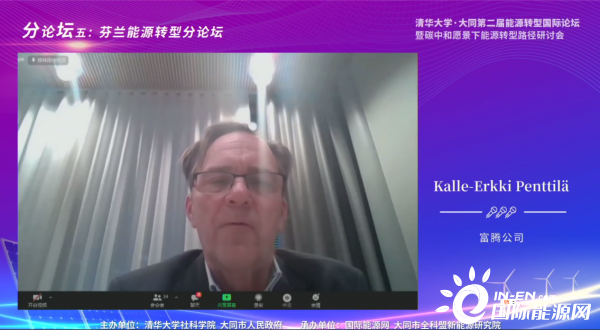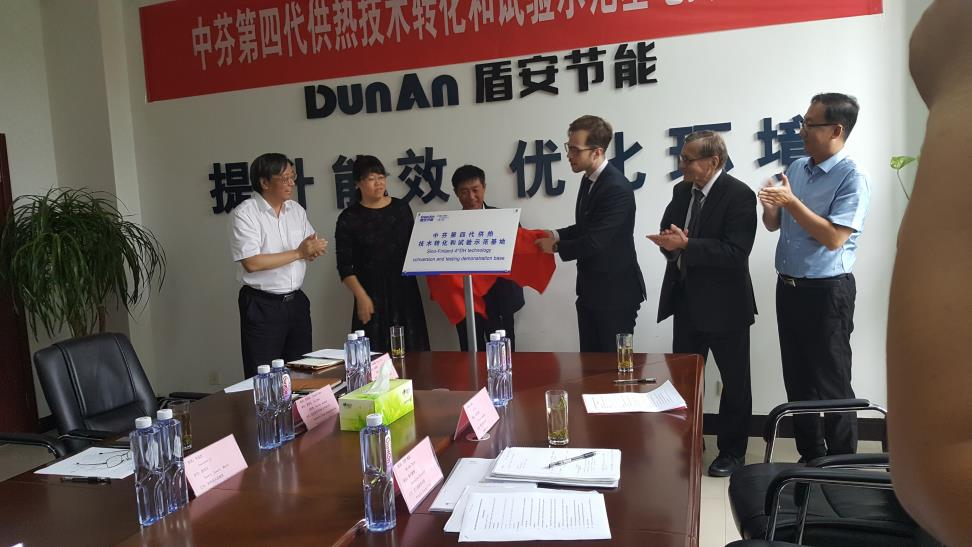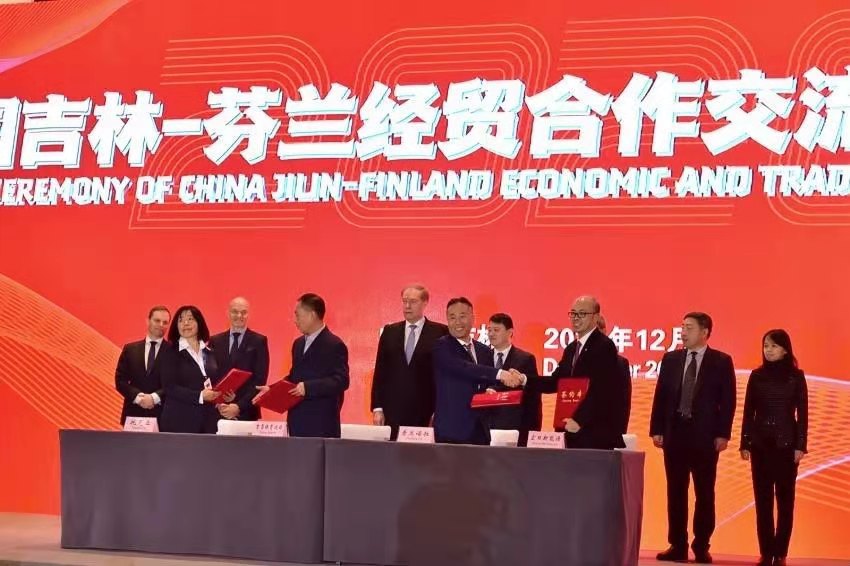One-third of district heat production now carbon neutral
Share of domestic fuels more than half
Wood biomass and other biofuels continued in strong growth as district heat energy sources in 2014, with a growth rate of nine per cent. Analysis by Finnish Energy Industries (ET) shows that the share of wood, wood residue and other domestic renewable energy sources rose to 31 per cent. When the use of industrial secondary heat is included, the share of carbon-neutral district heat production rose to as much as 33 per cent.
“The share of domestic fuels exceeded 50 per cent for the first time,” says Director Jari Kostama from ET. One significant and growing source of additional energy in the district heat production palette is waste, which has allowed the use of fossil fuels to be reduced. The Vantaa waste-to-energy plant was commissioned in 2014, and there are other large district heating systems utilising municipal waste in Lahti, Oulu, Vaasa, Kotka, Riihimäki and Hyvinkää. The share of waste in district heating fuels was already close to 6 per cent last year.
The increased share of biofuels has also led to a reduction in the carbon dioxide emissions from district heat production. The carbon dioxide emissions from district heat production were 5.7 million tonnes, showing a drop on the previous year of four per cent. The average carbon dioxide emission was 165 g per each kilowatt-hour generated.
Fossil fuel use continued to fall – peat retained its position
Natural gas was used to generate 22 per cent of district heat and CHP electricity. The share fell four percentage points on the year before, with a 16 per cent drop in energy volume. The share of coal, 24 per cent, fell by two percentage units, in terms of energy volume it was used 10 per cent less than the year before.
Peat use has now stabilised, its share of all fuel use remaining at the previous year’s level of 13 per cent. Although the 2014 district heat production was lower than the year before due to milder weather conditions, the energy volume of the peat used to generate district heat and combined electricity remained unchanged. Oil accounted for three per cent of all fuels used, it is mostly used only in peak-load heating plants.
Share of combined heat and power generation increased
Last year, the volume of district heat produced was 34.5 TWh. As cogeneration with electricity it amounted to 25.6 TWh. The volume is a little higher than the year before. The share of cogeneration of the total district heat production rose by a good percentage point to 74 per cent.
The cogeneration output is sufficient to cover the heating requirement in an outside temperature of between 0 and -10oC, depending on location. At colder outside temperatures, peak-load heating plants are used to supplement the heat production. There were only a few such extremely cold periods in 2014. Of the heating months, only January was colder than normal. In terms of average temperature, 2014 was warmer than normal by a good degree.
The volume of electricity cogenerated with district heat was 12.6 TWh. The volume fell a little compared to the previous year. In combined heat and power generation, a third of the fuel quantity is saved compared to when they are produced separately. The emissions are reduced proportionally.
Warm weather reduced district heat sales by one per cent
Last year, district heat sales totalled 31.3 TWh. There was a slight drop on the year 2013. The drop was due to the milder weather than the year before.
At the end of 2014, there were almost 1.33 million homes with district heating, with 2.7 million people living in buildings with district heating. 55 per cent of the housing stock of the whole country were within district heating sales areas.
Most public buildings are connected to district heating networks. Almost half of the heating energy requirement for all our buildings is obtained from district heating. In the largest cities, more than 90 per cent of the heating energy requirement of the buildings is covered by district heating.
The monetary value of district heat sales was EUR 2.35 billion. The mean price of district heat inclusive of tax, including the energy fee and power charge, was 7.5 cents per kilowatt hour. The average price rose by about three per cent on the previous year.
Taxes make up a little less than 30 per cent of the average price of district heat. Factors influencing district heat price levels include e.g. the fuels used and their excise duties, system size and conurbation structure, mode of production and age of production plants, and emissions trading costs.
District cooling sales continued to grow
District cooling sales grew on the previous year by about 13 per cent, standing at 191,000 MWh. The growth resulted from the expansion of existing district cooling systems.
Helsingin Energia is the most important vendor of cooling energy, supplying 70 per cent of all the sales in Finland. In relative terms, the greatest growth was in the district cooling systems of Fortum in Espoo and that of Tampereen Kaukolämpö, both launched in 2012.
At the end of the year, the power demand of customers connected to district cooling was 224 MW, which is about 10 per cent higher than the year before.
Reliability of district heat supply excellent
Statistics collected by ET show that the reliability of district heat supply continues to be top class. In 2014, the district heating customer’s supply was interrupted on average for 1.8 hours, making the security of district heating supply 99.98 per cent. Most of the interruptions are planned and the customers are notified in advance. The work of connecting new customers to the network, planned basic improvement works and moving pipelines due to roadworks also cause supply interruptions.
The high security of supply is the result of systematic quality control, upkeep and preventive maintenance.
Open Energy year 2014 (ELECTRICITY) -slides
Further information:
Jari Kostama, Director, Tel. 050 301 1870
Mirja Tiitinen, Adviser, Tel. 050 434 6994
© Energiateollisuus
Finnish Energy, Fredrikinkatu 51-53 B, 5th fl, PO Box 100, 00101 Helsinki Tel. (09) 530 520 Fax. (09) 5305 2900



